It’s been a while since we saw the E-P nomenclature. It used to be the high-end Pen model (above E-PL and E-PM), and the latest with this name was the E-P5, released in 2013. After that, Olympus focused on its OM-D cameras, and reduced the Pen series to E-PL models only.
The new Olympus Pen E-P7 packs a few features from the discontinued Pen F and others from the OM-D cameras, making it a bit more advanced and desirable than the latest E-PL10. It is also the first camera announced under the umbrella of OM Digital Solutions, the recently formed company that took over Olympus’s Imaging division.
Let’s see how the new camera compares against the previous Pen model, as well as the E-M10 mark IV, which is the most recent entry level model in the OM-D series.
What the E-P7, E-PL10 and E-M10 IV have in common:
- 180˚ down tilting LCD screen with 1.03M dots and touch sensitivity
- 4K video up to 30fps, 1080p up to 60fps, 720p up to 120fps
- Lots of extra features including live composite, Panorama, Multiple Exposure etc.
- Wifi and Bluetooth wireless connectivity
- Built-in flash
- BLS-50 battery with approximately 360 images per charge (CIPA)
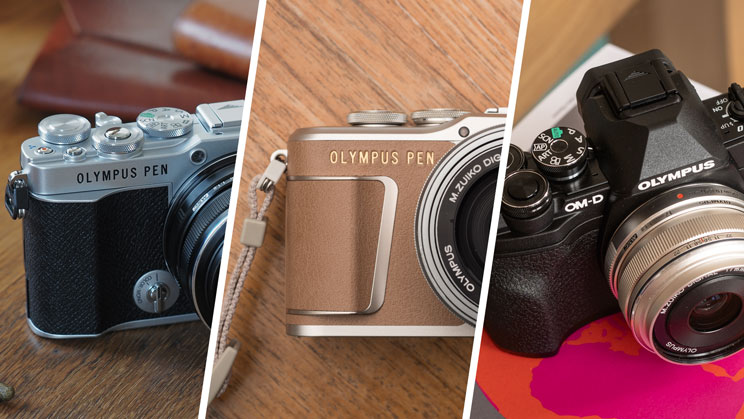
Ethics statement: the following is based on official specs for the E-P7 and E-PL10, and our personal experience with the E-M10 IV. We were not asked to write anything about these products, nor were we provided with any sort of compensation. Within the article, there are affiliate links. If you buy something after clicking the link, we will receive a small commission. To know more about our ethics, you can visit our full disclosure page. Thank you!
1. Design
The E-P7 and E-PL10 don’t have a built-in viewfinder and this is the main difference in design with the OM-D series.
The aesthetics of Olympus cameras, especially the low-end and mid-range series, has always been a strong selling point, and I think these three cameras are equally beautiful in their own way.
The E-P7 resembles the old Pen half-frame film camera, whereas the E-PL10 has a more fashionable look with its faux leather finish. The E-M10 IV resembles an old SLR film camera.
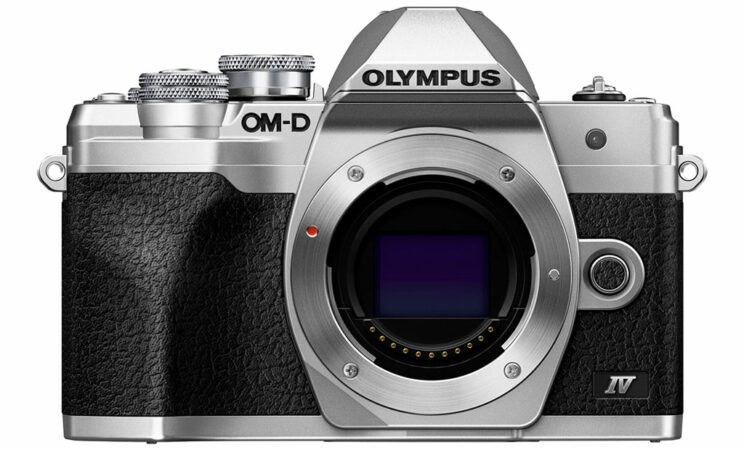
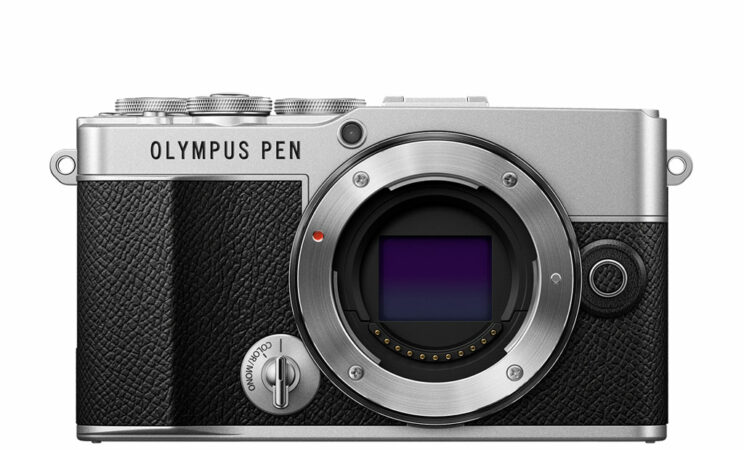

The E-P7 is available in two colours (white/silver or black silver), as is the E-M10 IV (black, or black/silver). The E-PL10 has three colours: white, brown and black.
The E-P7 and E-M10 IV have more controls with the twin dials on top (the E-PL10 has one) and a few extra buttons.
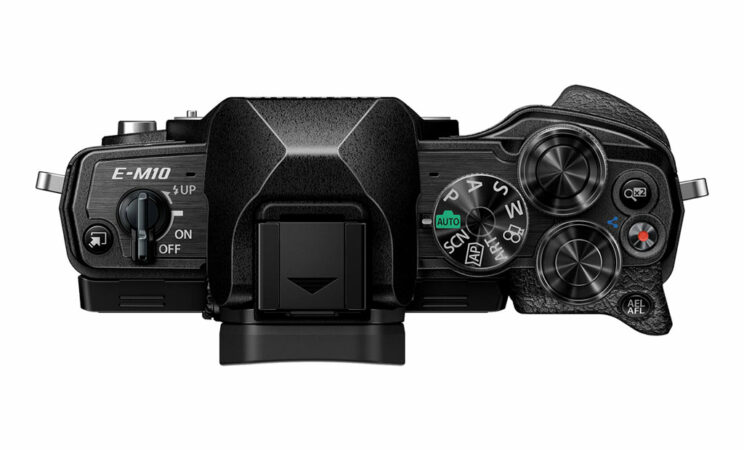
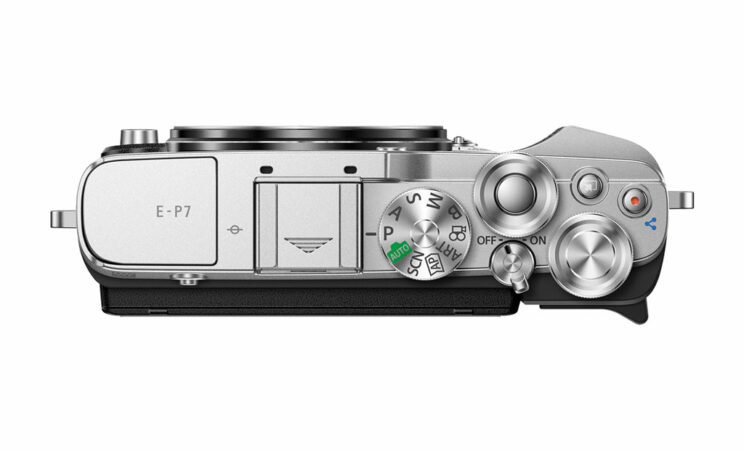
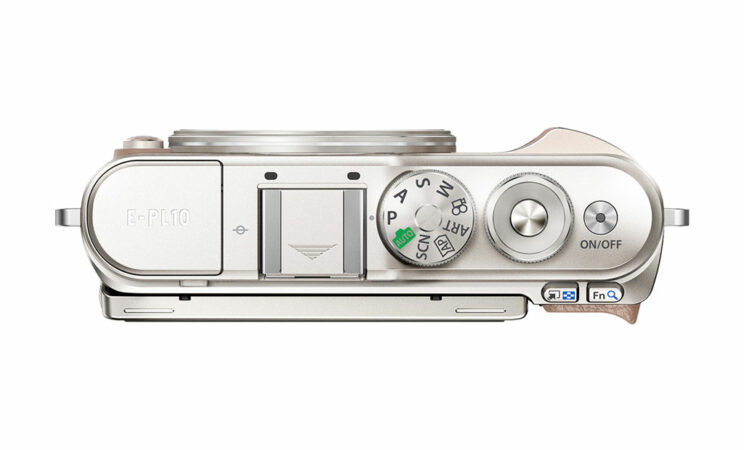
Neither is weather-sealed, nor do they have a magnesium alloy frame. The body construction is mostly plastic with a metal finish including the aluminium dials.
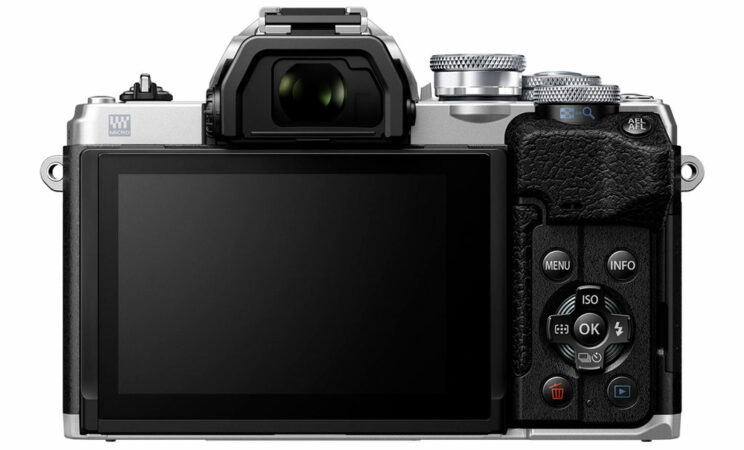
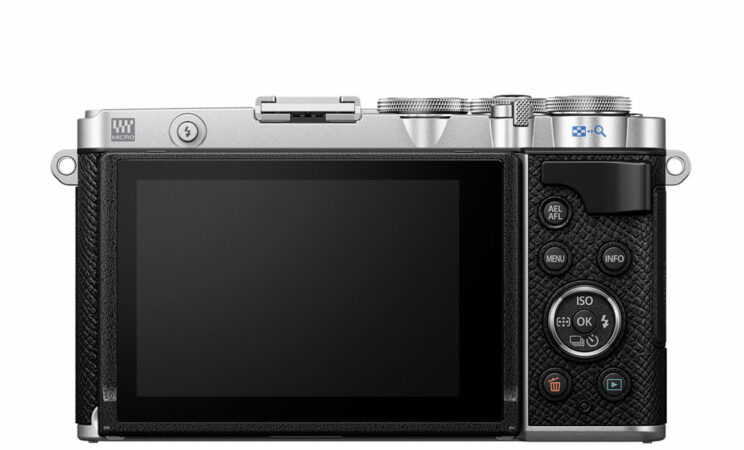
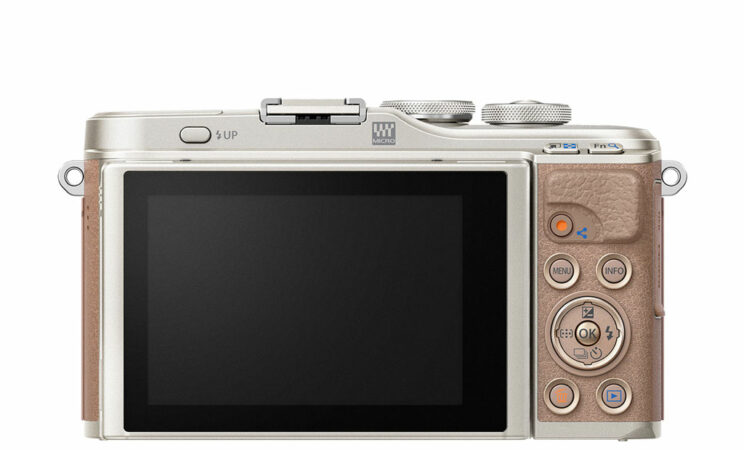
As for dimensions and weight, the E-PL10 is the smallest whereas the E-P7 is the lightest. The E-M10 is bigger, mostly because of the protruding EVF on top.
- E-PL10: 117.1 x 68 x 39mm, 380g
- E-P7: 118.3 x 68.5 x 38.1mm, 337g
- E-M10 IV: 121.7 x 84.6 x 49mm, 383g
2. Viewfinder
As said above, the E-M10 IV is the only camera to have a built-in viewfinder. It features 2.36M dots, 19.2mm eyepoint and a magnification of 0.62x. Although these specs are far from impressive by today’s standards, it has good clarity and brightness.
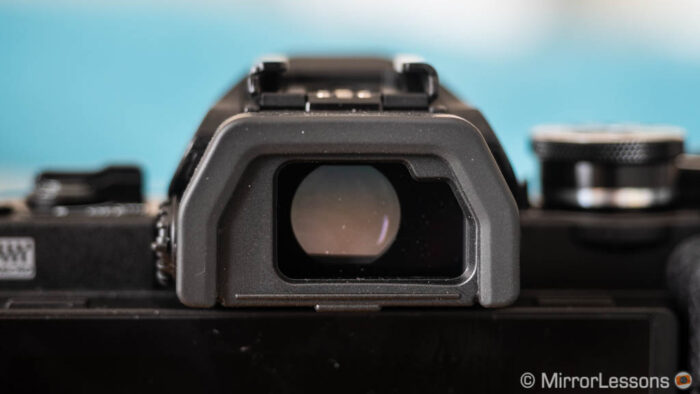
Since the E-PL9, Olympus has removed the accessory port that was sitting below the hot-shoe, making the camera incompatible with external viewfinders such as the VF-4. The new E-P7 is no different, so it looks like these Pen cameras provide no option for an optional viewfinder.
3. Sensor
The E-P7 and E-M10 IV feature a 20.3MP sensor, whereas the E-PL10 uses the older 16.1MP. This means that the latter will have less dynamic range and a slower sensor readout, but bear in mind that the 20MP sensor is far from new either, and has been used (with small modifications) since the release of the Pen F in 2016.
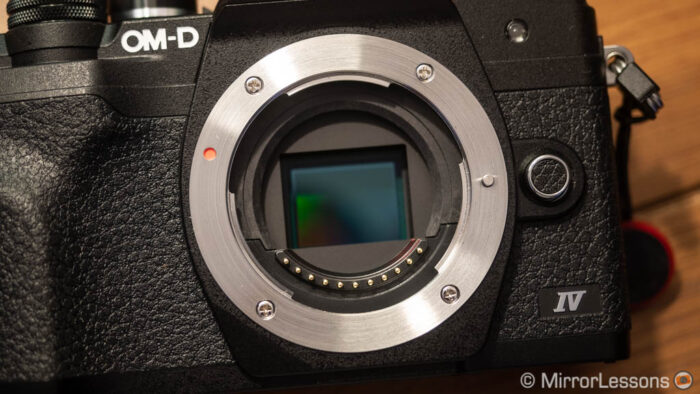
The ISO range is the same for the three cameras: 200 to 25600, with a Low value available (100 equivalent).
The image processor is also the same: TruePic VIII – although the one on the E-M10 IV and E-P7 is an updated version.
4. Image stabilisation
The three cameras feature in-body image stabilisation. The system on the E-PL10 is less advanced, with only 3 axes and a maximum compensation of 3.5 stops (CIPA).
The E-P7 and E-M10 IV have 5-axis stabilisation with a rating of 4.5 stops. Note that this is not the best Olympus can do. Other cameras like the E-M5 III and E-M1 III offer a more advanced system and a higher score.
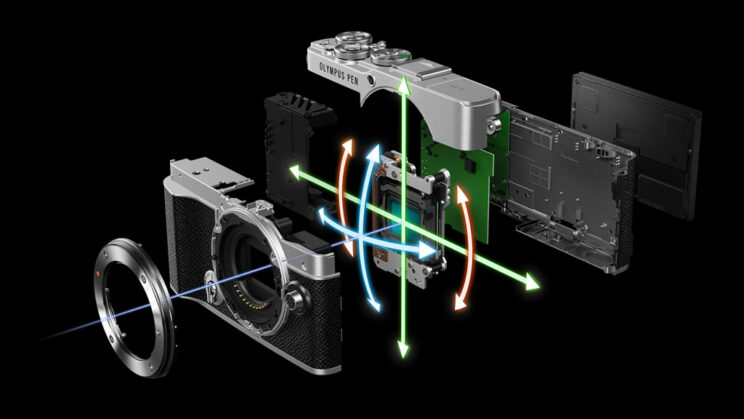
For the three of them, image stabilisation works for stills and video, and for video you can also enable digital stabilisation.
5. Profile Control switch
Unique to the E-P7 is the metal switch found at the bottom front of the camera, near the mount. Similar to the Creative Control Dial of the discontinued Pen F, it allows you to select various colour and monochrome profiles that are separate from the standard picture mode and the Art Filters found on every Olympus camera.
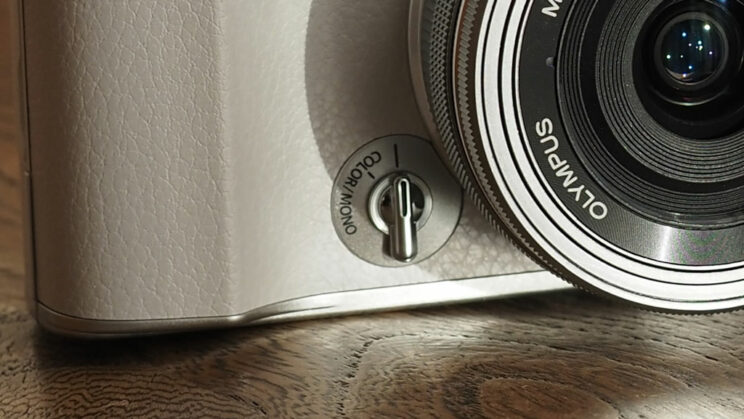
There is a selection of presets, or you can create and save your own profiles using the touch screen. Unlike the standard picture modes, there are more parameters to edit the look of your image. You can control the saturation of 12 colours independently, or select and modify 9 different colour filters for the monochrome mode. You can also vary shading and highlights/shadows.
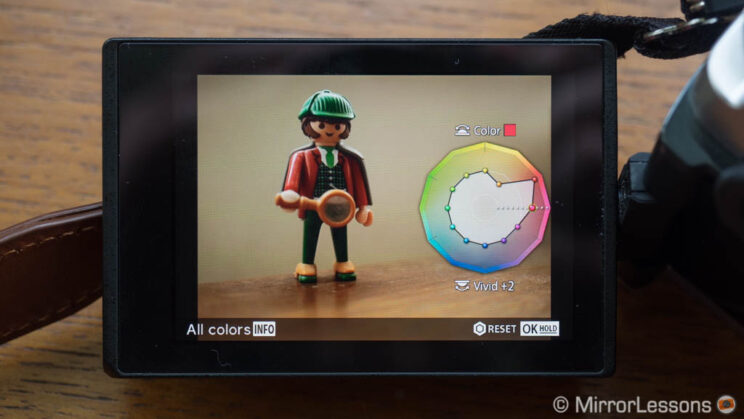
This option is not present on the E-PL10 and E-M10 IV, but you can re-create these looks in post with the RAW file and the Olympus Workspace software, which is free to download.
6. Autofocus algorithm
Olympus hasn’t being too specific about this, but the E-P7 should include the latest software algorithm concerning the autofocus (taken from the latest OM-D models such as the E-M1 III, and also present on the E-M10 IV).
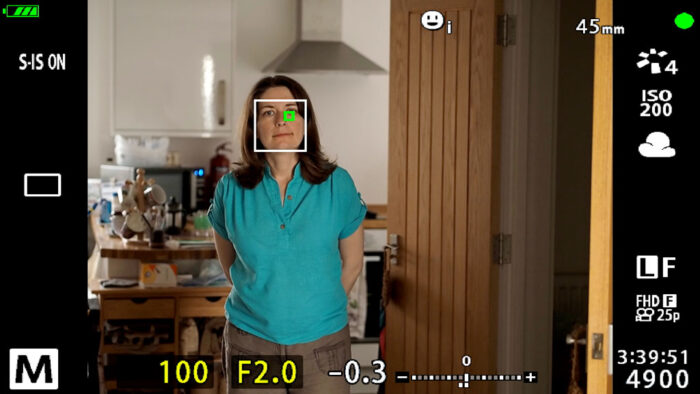
In particular the performance with face and eye detection should be more stable when the subject is not facing the camera directly, and the face can also be detected earlier when the subject is more distant. This should make the E-P7 and E-M10 IV more capable than the E-PL10.
The three cameras share the same autofocus system with 121 points. Sadly it is contrast detection only, which means it doesn’t have the same speed or accuracy as phase detection models, especially when it comes to tracking or following fast subjects, and there can be limits for video recording too.
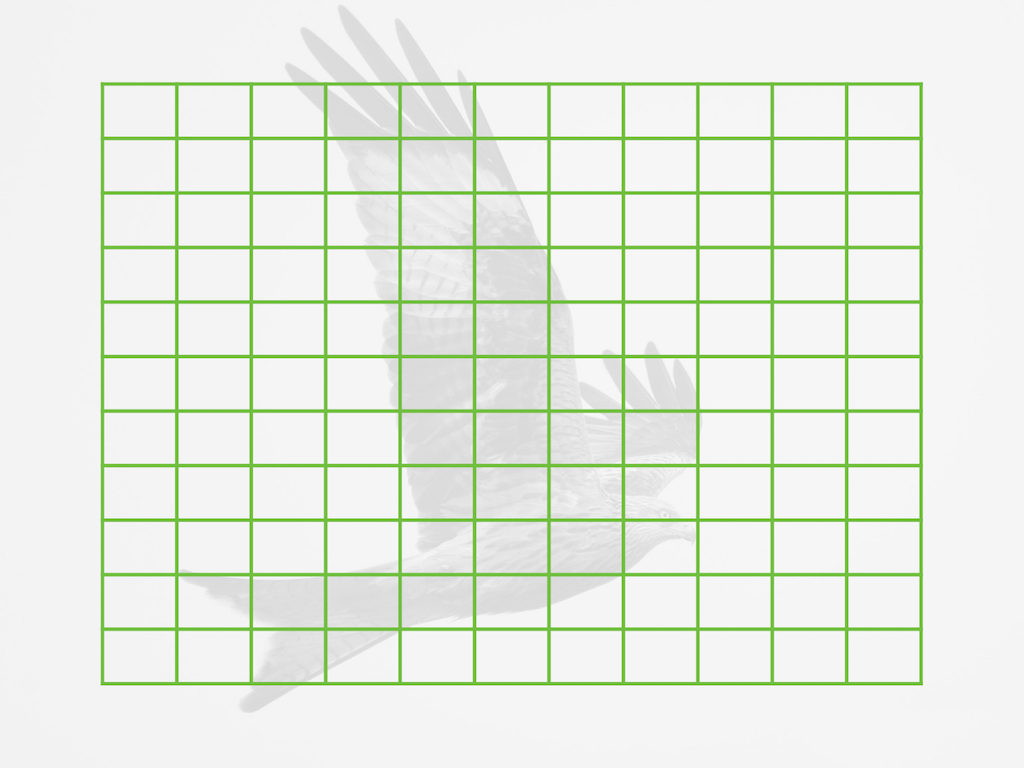
You can read more about this in my E-M10 IV report. I expect the E-P7 to behave in the same way although I cannot confirm without testing it personally.
7. Continuous shooting speed
A tiny difference between these cameras is the maximum continuous shooting speed:
- E-P7 and E-M10 IV: 8.7fps (H) or 5fps (L) using the mechanical shutter, 15fps (H) / 6.3fps (L) with the electronic shutter
- E-PL10: 8.6fps (H) or 4.8fps (L) with the mechanical shutter, 14.1fps (H) or 6.1fps (L) with the electronic shutter
I know, these are minimal changes and you’re probably thinking I’m scraping the bottom of the barrel. But at least I can add some buffer specs. At 15fps, the E-P7 and E-M10 IV can do 42 RAW files or 49 JPG (Large Fine compression). At lower speeds, it’s up to the card capacity. By contrast, the E-PL10 can do 14 RAW files or 220 JPGs.
8. SD card
The three cameras have one SD card slot only, found underneath in the battery compartment. The small difference is that unlike the other two model, the E-PL10 is not compatible with faster UHS-II cards (they’ll work but you won’t get the speed benefit).
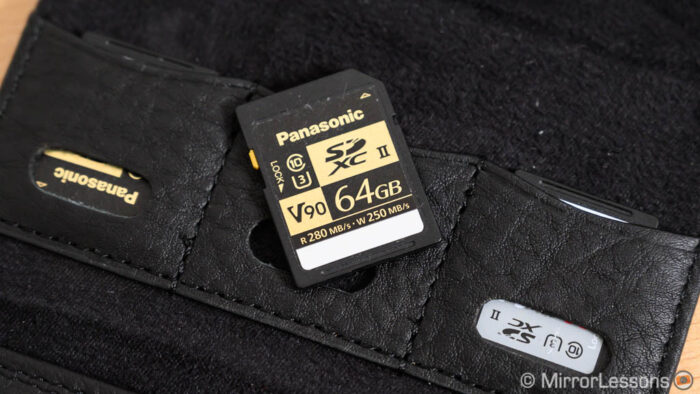
9. USB charging
Another disadvantage of the E-PL10 is the absence of USB charging.
On the E-P7 and E-M10 IV, you can charge the battery via the USB cable using a powerbank or other source, but the camera must be switched off.
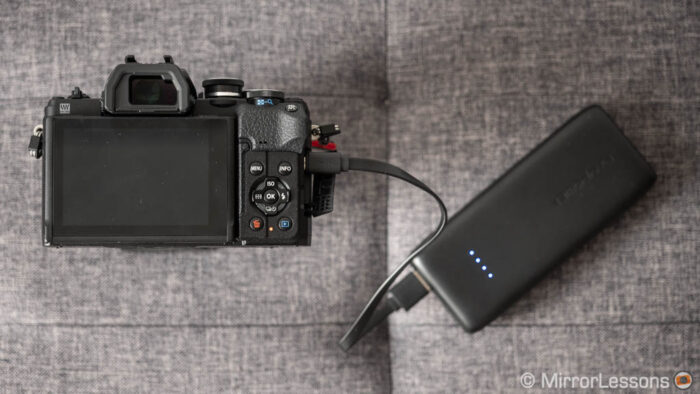
10. Price
The E-P7 is being launched at the retail price of £850 with the 14-42mm kit lens, or £750 body only.
The E-PL10 can be found for $600 / £600 / €720 (with lens), or $550 / €620 body only.
The E-M10 IV costs $700 / £700 / €850 with the lens, or $600 / £650 / €750 body only.
Note: prices as of June 2021.
Conclusion
The new E-P7 is a lovely camera to look at, but that is not a surprise: Pen models have always stood out for their design, and the E-P7 is one of the prettiest I think.
If we look under the skin however, there is nothing new. All the technology found inside comes from other Olympus cameras, and it’s the kind of technology we’ve seen time and time again. The camera is basically an E-M10 IV without the EVF, but with the Colour Profile switch.
If we compare it to the E-PL10, the changes are more significant: there is a better sensor, better image stabilisation, an updated AF algorithm and a few more dials and buttons.
With that said, I think the importance of the E-P7, more than its characteristics, reside in the fact that it is the first camera released after the sale of Olympus’ Imaging business, and the takeover by the new company OM-D Digital Service. The E-P7 (and new 8-25mm F4 Pro lens announced alongside it) marks the first step of this new chapter.
For now, this first step shows that nothing has changed. It’s a well designed camera that recycles specs here and there, and can be enough for many people, but there are other things like the lack of phase detection AF that is hard to digest in 2021. Potential competitors like Fujifilm and Canon have been aware of this for some time now.
I know it’s too early to judge the new OM company. The E-P7 was likely already planned before the change of ownership (as was the 8-25mm lens) and, hopefully, its release gives them more time to focus on new products. Furthermore, the camera is being released in Europe and select other regions only, excluding North America (for the time being at least). All this to say that we’re not seeing the true face of OM Digital Solutions yet.
Reminder: the links below are affiliate links. If you decided to buy something after clicking the link, we will receive a small commission.
Check prices of the Olympus Pen E-P7 on
B&H Photo
Check prices of the Olympus Pen E-PL10 on
Amazon | Amazon UK | B&H Photo | eBay
Check prices of the Olympus OM-D E-M10 IV on
Amazon | Amazon UK | B&H Photo | eBay
